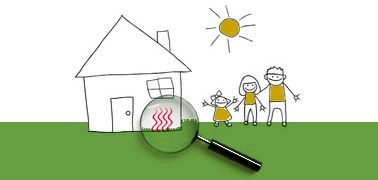Early radon gas tests in city buildings show the 10 facilities and their inhabitants aren’t in danger, with buildings all well below the recommended Health Canada levels for mitigation.
The city started testing for the colourless, odourless gas this year after a presentation by the B.C .Lung Association urged for a more robust response. The radioactive gas, which can cause cancer, is found naturally in the environment during the breakdown of uranium in rocks and soil. About 16 per cent of lung cancer deaths are related to radon exposure in the home, said the Canadian Cancer Society citing Health Canada statistics.
Three facilities - city hall, CN Centre and Kin 2 - had spots with more than 100 becquerels per cubic meter, the measurement for radioactivity. The highest readings were all found in the lower levels of of the buildings, but were still below Health Canada’s 200 Bq/m3 threshold for kicking in mitigation efforts due to the increased risk for cancer.
City hall had the highest levels in its basement at 152 Bq/m3, according to a staff report to be presented at city council Monday night. In all there were 22 testing sites in city hall, which had a wide range of radon concentration between 15 and 83. The city tested 10 facilities between January and April and another 26 should be tested by June 2017.
The city also tested the Rolling Mix Concrete, with a range between 32 and 77 Bq/m3, Elksentre Arena, with a range between <15 and 36 Bq/m3, Four Seasons Pool with a range between <15 and 31 Bq/m3.
All test results from all 10 civic facilities are lower than the 200 Bq/m3 level above which, there is an increased risk of lung cancer and above which Health Canada recommends mitigation measures be taken to reduce the radon concentration.
In June, School District 57 announced its facilities would be tested for radon gas this fall. It pulled $32,000 from its surplus to pay for the kits, which would go to all active and closed schools and the administrative building.
A January 2015 report from the B.C. Lung Association found that on average one in three Prince George homes tested above Health Canada’s suggested safety threshold for radon.
The Prince George Project gave kits to 2,000 houses across four postal codes. Three quarters submitted those tests, of which 29 per cent reported high radon levels. Last fall, the city sold discounted kits to homeowners as part of Radon Aware Month, and sold out of the 200 it bought.



.png;w=120;h=80;mode=crop)